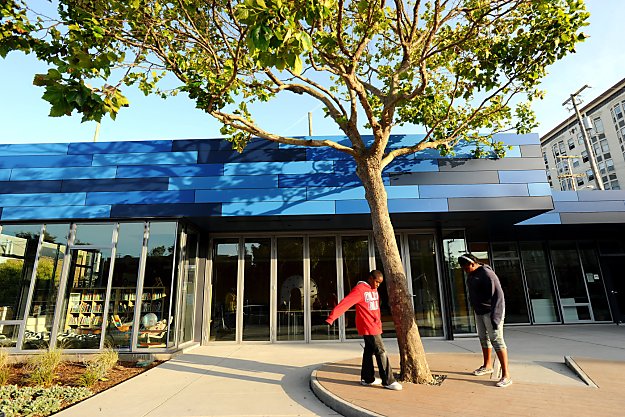While not well received by all, Mike Davis’s City of Quartz from 1990 is still a significant book on Los Angeles urbanism. Essays like his text “Fortress L.A.,” served as an “often strident reality check, an examination of the ways in which the built environment in Southern California was by the 1980s increasingly controlled by a privileged coterie of real-estate developers, politicians and public-safety bureaucracies led by the LAPD,” as stated by Christopher Hawthorne.
With the tenth anniversary of 9/11 coming up, such topics are still remarkably relevant. In a recent article for TCPalm, Michael Lingerfelt, president of Florida’s AIA Chapter, considered the role of architecture in security measures.
Consider the drawn-out controversy over the design of the lead tower of the new World Trade Center complex in Lower Manhattan. The tallest building in the United States, standing at a symbolic height of 1,776 feet, will rise from a bombproof base that critics have compared to a concrete bunker.
In Washington, D.C. the National Capital Planning Commission recently organized a design competition for the President’s Park South. The idea of improving the area is great, but Lingerfelt brings up a valid criticism: why is design an issue to be addressed second to security?
Design is more than skin-deep; it’s about preventing harm, not coming in afterward to tidy up the debris.
The issue of security was also brought up in BIG’s Danish Pavilion at the 2010 Shanghai Expo. The architects asked Chinese artist Ai Weiwei to come up with a replacement for the Little Mermaid, which would travel to China as the centerpiece of the pavilion. To ease the Danes’ concern for their missing monument, Ai Weiwei suggested installing a video camera in the pavilion, sending continuous live-stream footage of the sculpture back to an LED-screen on the Copenhagen waterfront. Aiming to point out the realities of our contemporary life, Ai Weiwei used a surveillance camera—the same which was installed at the entrance of his own studio by the Chinese government.
Certainly an interesting comment on security, but unfortunately the concept of the piece was never integrated fully with the Danish pavilion. Labeled with a descriptive plaque on the wall, the piece was an artwork, merely co-existing with the architecture rather than collaborating. [1]
Lingerfelt ends his article with a poetic message.
To be alive is to be at risk; to live freely carries the greatest risk of all. Our role as architects is to secure the open space in which a democratic people can continue to risk without fear the bold adventure that is democracy, and to live the values of openness and freedom of movement that have made our nation great.
Can design and security truly be integrated as Lingerfelt suggests, or will we inevitably end up with a forceful invasion of security measures as Davis described?
_________________________
[1] For a more detailed report on the collaboration of BIG with Ai Weiwei, take a look at the first issue of CLOG, out this Fall. www.clog-online.com




